Dynamic
Data Structure
Frontend
Form Builders
Frontend Dynamic
Layout Manager
Engagement &
Growth
Dynamic Data Structure
A toolkit that lets you build a dynamic architecture fast and cost-effectively.
Custom Post Types
Go beyond the default Post Types to organize & structure the different content types for different needs.
Custom Taxonomies
Use custom taxonomies to categorize post types for better search, filtering, & structure on front/back ends.
Choose from 20+ UI elements for Custom Fields to add to Post Types, Taxonomies or User Roles.
UI containers for custom fields to store additional data beyond WP fields, displayed in admin panel.
Display a custom widget to drop anywhere in a single-page sidebar using developer-friendly filters called Cubes.
Group similar fields for Post Types to add content such as FAQ, social icons, employees, etc. User Roles are supported.
Build advanced relationships with Custom Post Types, Taxonomies, and User Roles to link multiple dynamic content types.
Create relationship fields with Custom Post Types, Taxonomies, and User Roles to link multiple dynamic content types.
Displays dynamic content (ex. posts) based on the geolocation provided on your website by the end-users.
Choose between Google Maps, Open
Street Map, and Mapbox API in order to
display a map with a search result.
Allow users to add Google Map using this field type which offers reverse geocoding lookup, autocomplete searching, and more.
Display the dynamic listings in a grid or list
view. Allow users to switch between both
styles on the archive page.
Allows users to enter any combination of letters, numbers, or symbols. Character limit can be set for all basic fields.
Allows users to enter any characters that display like a paragraph in a separate lines similar to a Description field.
Allows users to enter any numbers without spaces. Supported symbols are plus (+), minus (-) and period (.)
Allows users to enter an email address with any number of characters. Supported symbols are commercial (@) and period (.)
Allows users to enter any number of characters of any valid website address (ex. http://your-url.com).
Enables users to enter any combination of characters, including letters, numbers, and symbols, and hashes each one of them.
The WordPress content editor that appears in Posts and Pages is created by the Wysiwyg field.
The native WordPress media modal can be used to upload and select a picture in the Image field.
Create a gallery using an interactive interface which helps to manage a group of images which is offered by the Gallery field.
Using the built-in WordPress media pop-up, a file can be selected and uploaded using the File field as an attachment.
For interactively embedding tweets, videos, photos, audio, and other content, use the oEmbed field.
Add any number of drop-down custom fields anywhere to allow users to choose an option from a list of multiple options.
Add the checkbox field to allow users to check multiple options from a list of alternatives.
Add the Radio button to allow users to select a single option from a list of alternatives.
The interactive Range field lets you choose a numerical value between two defined endpoints.
The Color Picker field offers an easy way to choose a hex color string using an eyedropper or enter RGB values.
A jQuery date and time selection popup is created by the Date Time Picker field.
The Post field lets users select posts, pages, or custom post type items. Select2 UI library is available.
Allow users to choose one or more taxonomy terms in the Taxonomy field. Select2 UI library is available.
Allow users choose one or more users from the User field. Relationships between data objects can be created using this field type.
Create similar fields group for Post Types to add content such as FAQ, social icons, employees, etc. User Roles are supported.
View and manage custom fields for post types, users, and taxonomies using standard WP REST API endpoints.
Dynamic Data Structure
A toolkit that lets you build a dynamic architecture fast and cost-effectively.
Custom Post Types
Go beyond the default Post Types to organize & structure the different content types for different needs.
Custom Taxonomies
Use custom taxonomies to categorize post types for better search, filtering, & structure on front/back ends.
Choose from 20+ UI elements for Custom Fields to add to Post Types, Taxonomies or User Roles.
UI containers for custom fields to store additional data beyond WP fields, displayed in admin panel.
Display a custom widget to drop anywhere in a single-page sidebar using developer-friendly filters called Cubes.
Group similar fields for Post Types to add content such as FAQ, social icons, employees, etc. User Roles are supported.
Build advanced relationships with Custom Post Types, Taxonomies, and User Roles to link multiple dynamic content types.
Create relationship fields with Custom Post Types, Taxonomies, and User Roles to link multiple dynamic content types.
Displays dynamic content (ex. posts) based on the geolocation provided on your website by the end-users.
Choose between Google Maps, Open
Street Map, and Mapbox API in order to
display a map with a search result.
Allow users to add Google Map using this field type which offers reverse geocoding lookup, autocomplete searching, and more.
Display the dynamic listings in a grid or list
view. Allow users to switch between both
styles on the archive page.
Allows users to enter any combination of letters, numbers, or symbols. Character limit can be set for all basic fields.
Allows users to enter any characters that display like a paragraph in a separate lines similar to a Description field.
Allows users to enter any numbers without spaces. Supported symbols are plus (+), minus (-) and period (.)
Allows users to enter an email address with any number of characters. Supported symbols are commercial (@) and period (.)
Allows users to enter any number of characters of any valid website address (ex. http://your-url.com).
Enables users to enter any combination of characters, including letters, numbers, and symbols, and hashes each one of them.
The WordPress content editor that appears in Posts and Pages is created by the Wysiwyg field.
The native WordPress media modal can be used to upload and select a picture in the Image field.
Create a gallery using an interactive interface which helps to manage a group of images which is offered by the Gallery field.
Using the built-in WordPress media pop-up, a file can be selected and uploaded using the File field as an attachment.
For interactively embedding tweets, videos, photos, audio, and other content, use the oEmbed field.
Add any number of drop-down custom fields anywhere to allow users to choose an option from a list of multiple options.
Add the checkbox field to allow users to check multiple options from a list of alternatives.
Add the Radio button to allow users to select a single option from a list of alternatives.
The interactive Range field lets you choose a numerical value between two defined endpoints.
The Color Picker field offers an easy way to choose a hex color string using an eyedropper or enter RGB values.
A jQuery date and time selection popup is created by the Date Time Picker field.
The Post field lets users select posts, pages, or custom post type items. Select2 UI library is available.
Allow users to choose one or more taxonomy terms in the Taxonomy field. Select2 UI library is available.
Allow users choose one or more users from the User field. Relationships between data objects can be created using this field type.
Create similar fields group for Post Types to add content such as FAQ, social icons, employees, etc. User Roles are supported.
View and manage custom fields for post types, users, and taxonomies using standard WP REST API endpoints.
Frontend Form Builders
Streamlines web customization with versatile form builders and content tools.
Build search forms for post types based on keywords (default), terms (taxonomy), and custom fields.
Enhance the search experience by building search filters based on keywords (default), terms (taxonomy), and custom fields.
Create different WordPress Registration Forms for different user-roles, each with its own set of pre-defined form fields and layout.
Create different User Profile Forms for different user-roles. Customize the layout and the appearance of the forms to match your styling.
Build custom front-end submission forms for any post type to enable users to easily submit and edit post types forms right from the frontend.
Frontend Dynamic Layout Manager
Seamlessly Craft and Customize Dynamic Web Layouts
Easily build custom user dashboards and display different tabs and content based on user roles.
Dynamically pull data in Elementor to display a unique title, description, price, address, gallery images, etc. for each post.
Enable full control to construct unique post grids, enabling tailored content presentation.
Easily customize search form layouts using the form build feature, seamlessly integrating search fields into your website's design.
Create and customize registration form layout using the form builder, and seamlessly integrating registration form and fields.
Easily customize user profile form layout using the form build feature, seamlessly integrating registration form and fields.
Single-post Template Editor allow you to build and customize the post type details using our drag and drop layout builder.
Engagement & Growth
Explore varieties of advance features to take your game to the next-level
Easily build simple or advanced contact forms with over 25 custom fields using a drag-and-drop form builder.
Easily build simple or advanced lead forms with over 25 custom fields using a drag-and-drop form builder to capture leads.
Enable vendors to respond to messages directly from their website's inbox, keeping users engaged without needing to leave the site.
Create an engaging environment where users can post reviews and ratings, or participate in valuable discussions.
The Digital Wallet feature allows commission earning and vendor finance tracking in a multi-vendor marketplace.
WooCommerce Integration allows selling plans, ad promotion, and digital wallet integration for a streamlined ecommerce marketplace.
Enable targeted monetization of boosted posts, automatically placing ads based on keywords, category, or location.
Email Verification enhances security during signup and listing submission by sending a confirmation link or an OTP to a user's email.
The Post Claim System allows users to claim listings, enhancing credibility through a visible "claimed" badge.
Social Login provides quick, secure sign-in via Facebook or Google, streamlining the user registration process.
Check availability and schedule bookings, making it easy for both businesses and customers to coordinate.
Customers can book specific time slots for their appointments, and businesses can manage their schedules efficiently.
Users can select number of persons, and make secure online payments, simplifying the process of ticket purchase for various occasions and travel needs.






